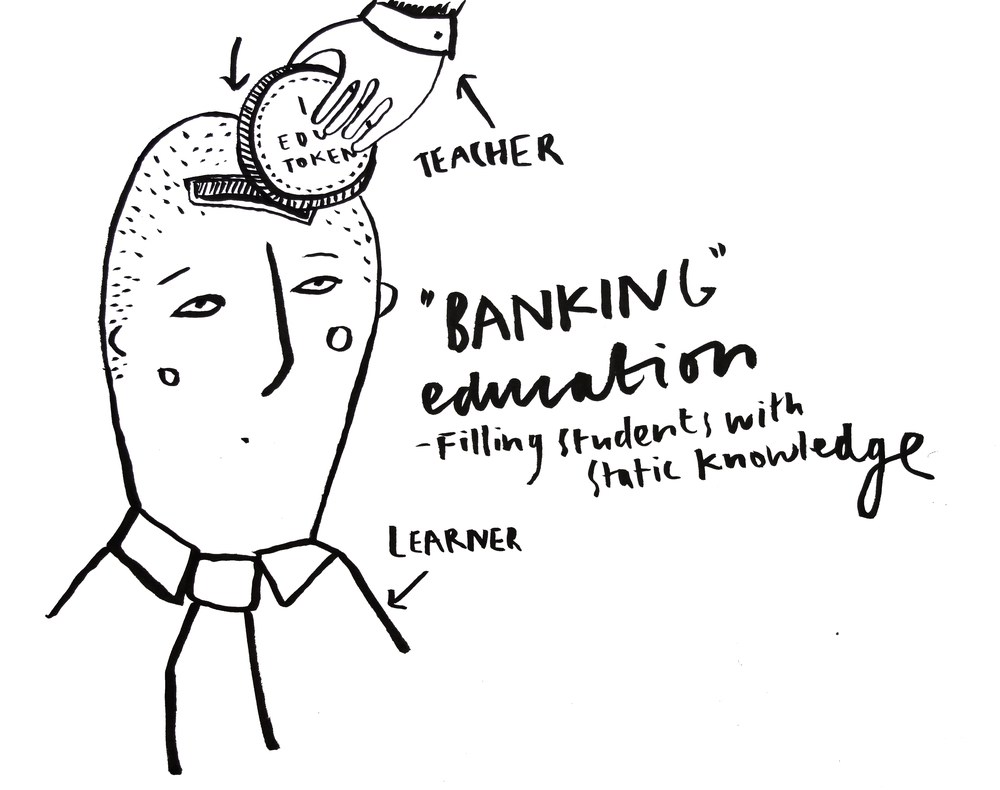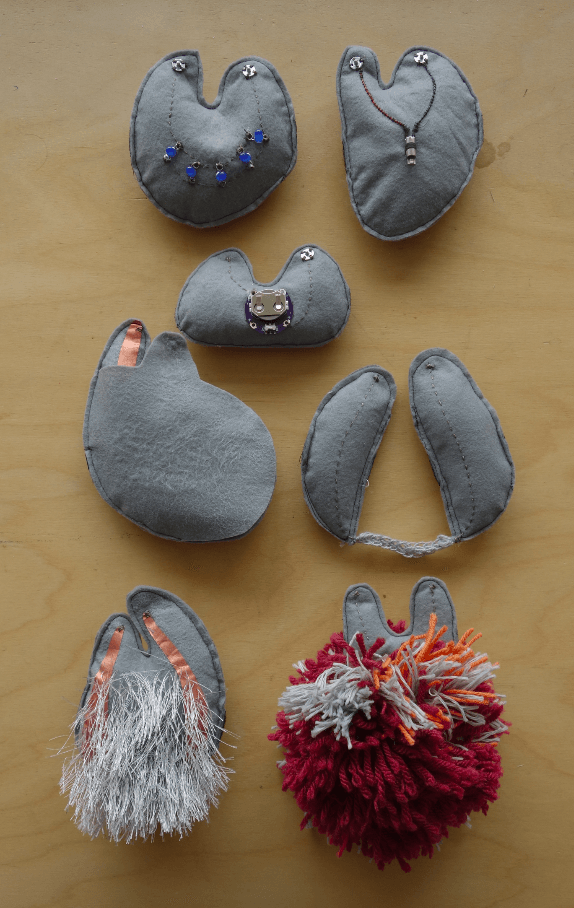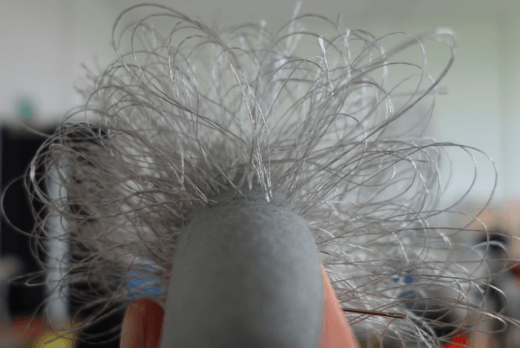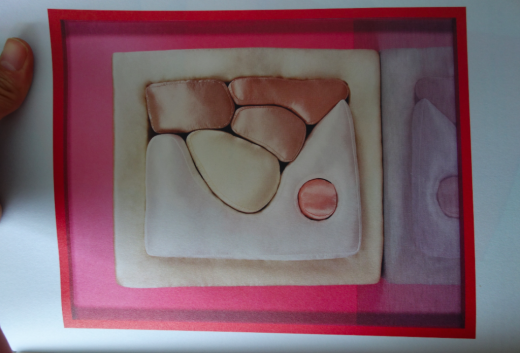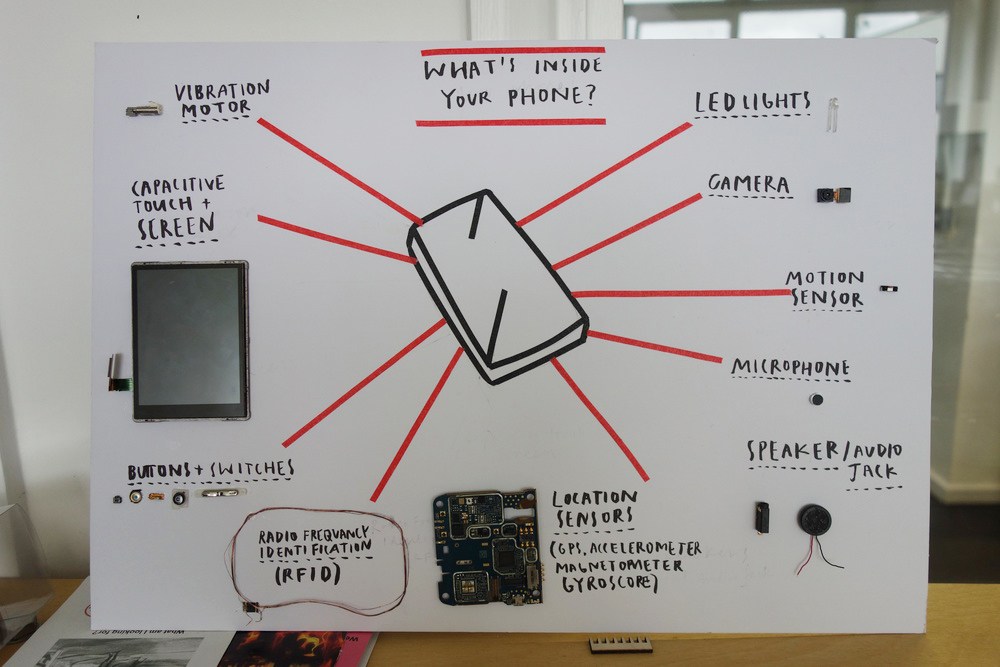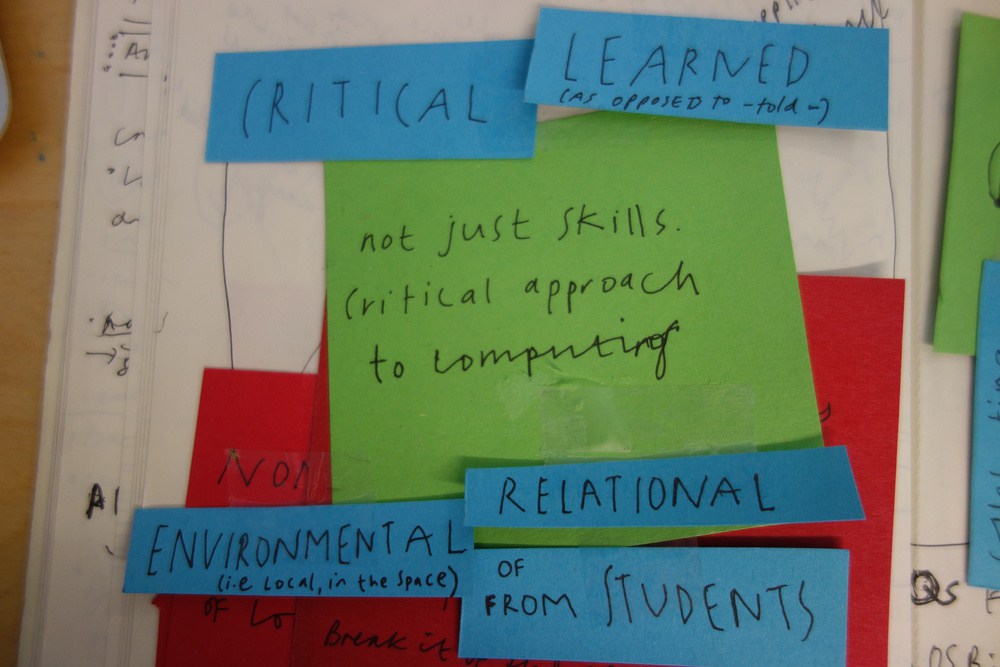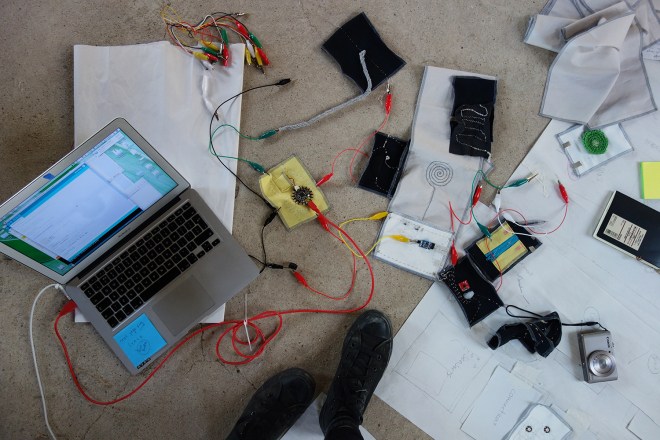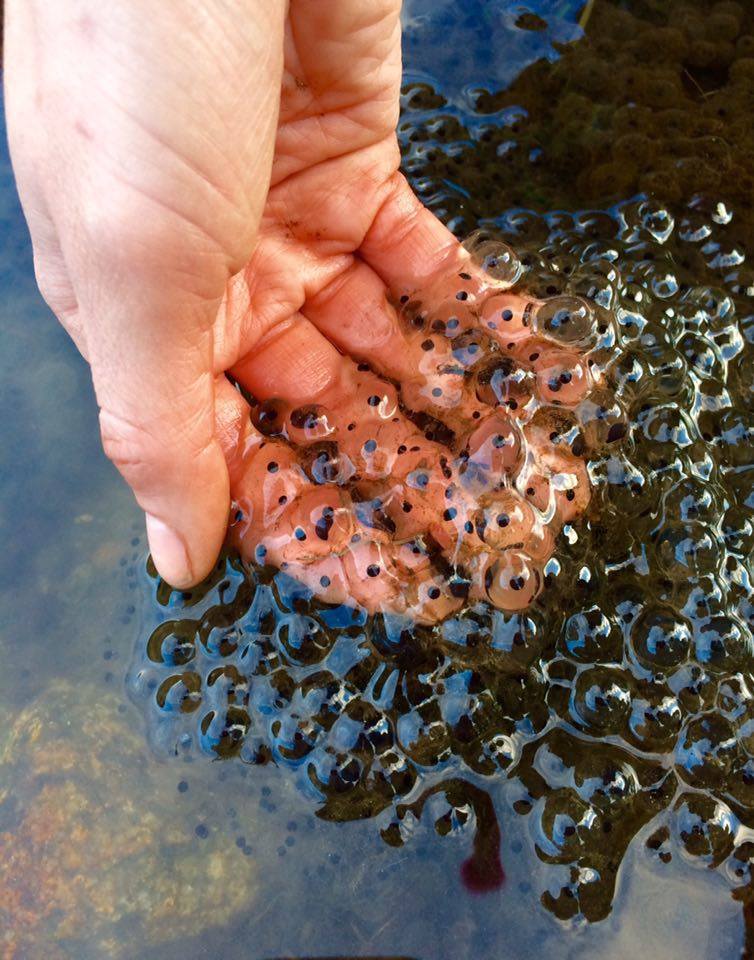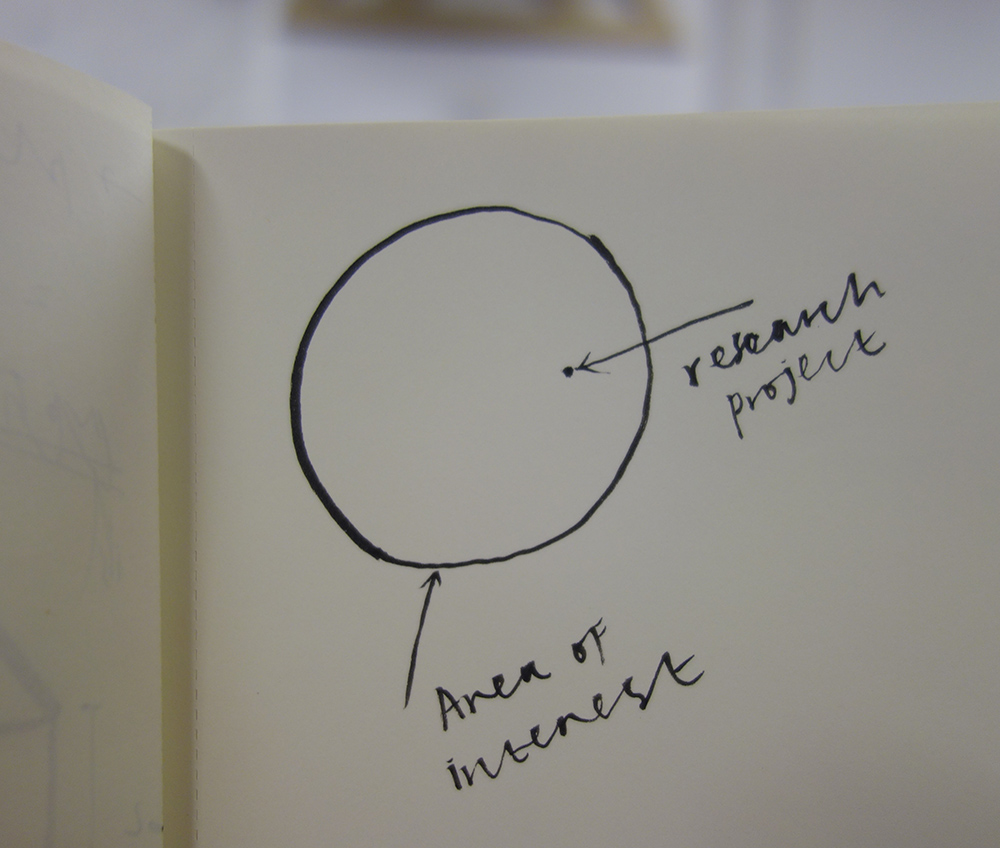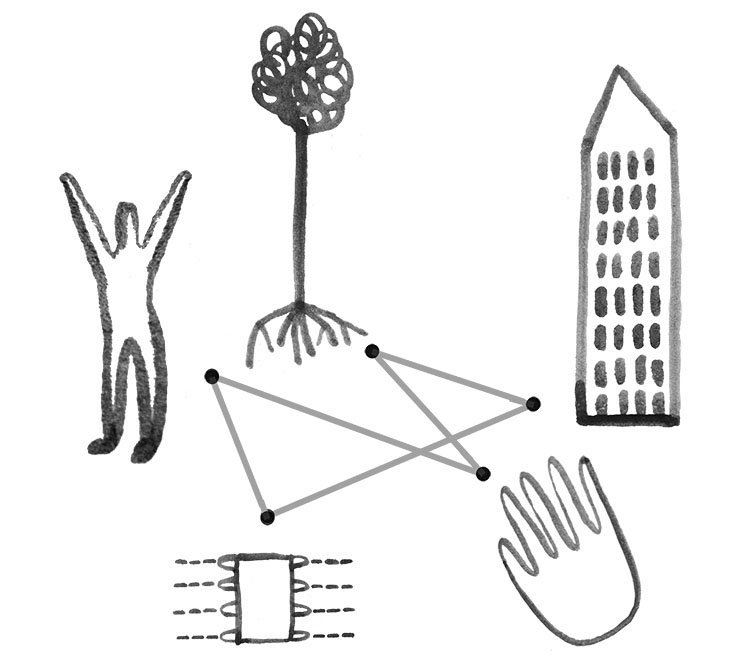Category / Human Breadboards
Human Breadboards is an exploration into tangible interfaces for learning computing. As well as exploring methods for design learning, I made a series of interconnecting sensors and actuators that can be used for rapid prototyping interactive design ideas on the body.
-
Hubs and Maps
It happened. I am totally exhausted after working for 4 months on this research project, but also very awake. 12 thousands words, some tweaking on inDesign, and a bit of embroidery later and this book is a thing. The abstract: “In this study I explore how design processes can be used to connect students’ and…
-
An illustrated guide to embodied learning
From the review of literature I conducted for my independent research project, here is an illustrated guide to embodied learning: Banking education Central to Paulo Freire’s discourse is his aversion to “banking” education, where learning is a process of transmission, and students are “containers” or “receptacles” to be “filled” with static knowledge by teachers who…
-
What are the patches?
I’ve made a set of patches that can be easily attached to the body, and used as props for learning. In this set I have not included a controller for programming, but that would be the next step. They are not complete in themselves -they are part of a larger set of props that work…
-
Using props
“Propping-up” learning with the patches. I ran another workshop to test another (more developed) iteration of the patches, and used them as props. I also used the deconstructed phone map, and we mapped our interests to make the making relevant. These three elements are given “shape” through the learners’ engagement.
-
Sewing patches
Some sewing and making.
-
Shaping amorphous things
I am making patches and although I want them to be “amorphous” they of course will have a shape because they are things, objects, material. So I am exploring ways of shaping that feels without shape. Squishy in their squishiness. Shaping. Elad Lassry, Pillow (2010)
-
Making patches
I’ve tested some patches for making and designing electronics on the body. My concept of “squishy” now focuses on the amorphous. (I have narrowed the concept down to one thread -otherwise there is just too much to explore!). The amorphous of “squishyness” is without a clearly defined shape. And in this case I would like…
-
Mapping sensors
I am making some props for workshops -ways of introducing concepts of sensing into students’ design process. After interviewing students last week, I’ve decided to make 2 things. 1 is a map of the sensors we have in our bog standard phones. The second are some “human breadboards” which are connectable sensors that you can…
-
Research prezo
We presented our research to our groups the other day, and I had to make some rapid decisions in order to focus my project. My feedback was that it was a huge topic, and using the term “squishy” has kind of become a term that describes the solution, rather than the question. General feedback: What…
-
Embodied?
Trying out a thing. I am (and have been in a large part of this MA) led by ideas surrounding embodied learning, and learning through the senses. Donna Harraway argues that science and technology should have an “embodied nature of all vision, and so reclaim the sensory system that has been used to signify a…
-
Machine Wilderness
Machine Wilderness project by FO.AM is a series of workshops and research that question the relationship between new technologies and ecological systems -studying how technology can relate to biological systems. “This program starts from the viewpoint of an organism as an expression of it’s habitat and works within a longterm view of interacting populations surfing…
-
Human Breadboards
Last year I participated in an etextiles symposium. I collaborated with a group of educators to explore learning + etextiles and wrote about what we made. I’ve just been re-visiting this in the process of making steps towards defining “squishyness”. I (think) I may be converging on some kind of meaning, and I think that…
-
A squish by any other name
What is it to be squishy? The first part of my research project is to make steps towards answering this question in the context of learning computing. I’d like to start with exploring some very squishy things. Have you ever delicately plonked your hand in a puddle of frog eggs? This spring (i.e. a few…
-
Squishy stuff
This week we’ve been starting to put together our research project proposals. I am thinking of doing something to do with squishy things. I have some initial questions: What are squishy things? Do squishy things help kids learn? What kind of processes are needed to use squishy things in science and technology classes? I’ve been…
-
Growbots
Carl DiSalvo talks about communities of practice and collaborative design processes. The Growbot Garden workshops consist of discussion and prototypes, both dialog and making. He explains: “Speculative design and engagement design is public design: it takes place in public, with the public, it is a construction of public (using John Dewey’s idea of public as…
-
Human Breadboards
The idea behind Human Breadboards grew out of the Education group discussion at the 2015 eTextile Camp (there is a detailed post the about breadth of these discussions here). Working collaboratively, we developed a non-kit-kit called the Kit of Process, which is a online library of swatches designed for educators to learn and teach eTextiles.…
-
eTextile Summer Camp
A few weeks back I arrived safely home from what was an inspiring, fascinating thought provoking, and utterly delicious eTexiles Summer Camp. The camp was geared around eTextiles and soft-circuitry, and is an annual event for practitioners, artists, and researchers making work in those areas. Almost 40 of us camped out for a week in…

